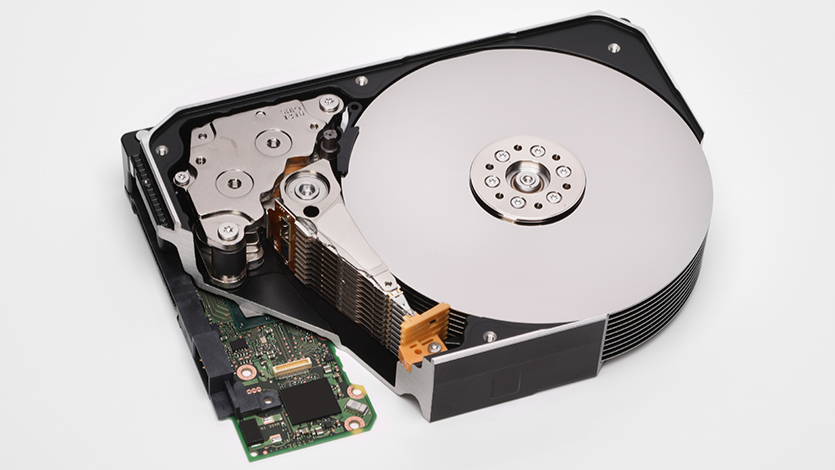Exclusive: Western Digital could be looking to mix tape and HDD tech to create 100TB+ media
Integrating the head into the media cartridge sounds like a no-brainer


Best cloud storage: Expand your storage easily
Best cloud backup: Protect your data on the go
Best cloud storage for photos: Space for your photos
Best business cloud storage: Data resilience for business
Best free cloud storage: Bits and bytes online for free
US storage giant Western Digital already covers SSD, memory cards, RAM and hard disk drives and has dipped its toes in DNA data storage (it is a founding member of the DNA Data Storage Alliance).
Now, newly-unearthed patents appear to show that the company may want to (re) add tape to complete its current media portfolio after the sun-setting of its Arkeia product range a few years ago.
The company was recently assigned a number of patents mentioning “tape embedded drive” in recent years:
- 11393498 (PDF) (head assembly with suspension system for a tape embedded drive)
- 20200258544 (PDF) (Tape embedded drive)
- 11081132 (PDF) Tape embedded drive with HDD components
- And a few more
What this alludes to is the intriguing possibility of getting the basic components of a tape drive merged with the actual tape media in a bid to reduce the inherent environmental and technological complexity of tape libraries as well as improving the access time by at least one order of magnitude.
Having the read and write heads closer to the media in an enclosed form factor is nothing new. That’s what hard disk drives do and what others, most notably Iomega with its Zip Drive, has tried to do in the past. Western Digital’s patent suggests adopting a standardized form factor, 2.5-inch or 3.5-inch, for easier adoption by data centers and hyperscalers.
The cost factor
An embedded tape would still be more expensive than a normal one (LTO-9 tapes retail for about $130 a pop) because of the extra electronics but you don’t need a tape drive to get started. As long as it sits somewhere between tapes ($4 per TB) and enterprise hard drives ($20 per TB), there will be a significant market for it.
A standard LTO (Linear Tape-Open) tape is 102 x 105 x 21mm while your average 3.5-inch hard drive is about 147 x 101 x 26mm while weighing about a quarter of the weight. LTO-9 has a compressed capacity of 45TB (18TB uncompressed) with the next generation - likely to come in the second half of this decade - doubling in capacity (obviously, there might be some adjustments as it was the case going from Gen 8 to Gen 9).
Are you a pro? Subscribe to our newsletter
Sign up to the TechRadar Pro newsletter to get all the top news, opinion, features and guidance your business needs to succeed!
A sealed LTO-based tape drive would likely be lighter, cheaper, consume/dissipate less power but also have more onboard compute capabilities than your standard hard disk. Thicker and wider tape reels would also allow far bigger capacities (LTO-9 uses 1Km of tape with a 5.2µm thickness and 12.65mm width).
100TB uncompressed capacities should be achievable and Western Digital is uniquely positioned to convert this into a workable reality especially as it can use its expertise in hard drive components.
That new tape could, all things considered, use a similar PCB and interface as an enterprise hard disk drive; it doesn’t need to have the traditional tape look. It will still have to solve the issue of physically spooling the tape to reach the desired data.
Perhaps the biggest challenge of all is to take this novel approach to tape to the LTO consortium, an organization that oversees the development of LTO and comprises IBM, HPE and Quantum, all of whom may have different commercial strategies that require having an expensive drive and cheap tapes.

Désiré has been musing and writing about technology during a career spanning four decades. He dabbled in website builders and web hosting when DHTML and frames were in vogue and started narrating about the impact of technology on society just before the start of the Y2K hysteria at the turn of the last millennium.